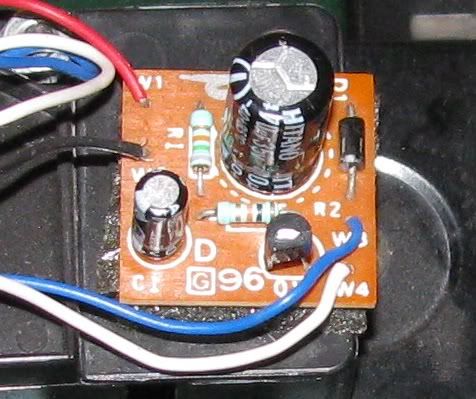I have been kicking around the idea of making my own circuit board to activate the whistle motor in a coal tender. I got started on this when I bought my first K-Line engine/tender off ebay and found that I couldn't get the whistle to activate with my CW-80. One thing I've really enjoyed about the CW-80 and the modern Lionel whistling tenders is how good a job it does in activating whistles compared to my PW stuff.
In the process of getting the original K-line board to work with the whistle activator supplied by K-line, that board burned up. So, I carefully removed a board from one of my Lionel tenders and put it into the K-line and it worked great. Since then I reverse engineered the Lionel circuit to see if I could make my own. I did have a question about using one of two different resistors, see below.
I've been searching through the Mouser's catalog and these are the parts I've come up with.
Darlington Transistor
1 mF 50V Capacitor
470mF 35V Capacitor
1N4001 Rectifier Diode
7.5 K Ohm Resistor
7K Ohm Resistor
or
6.8K Ohm Resistor
The 7K resistor is what's on the board but it costs $.60 each. The 6.78K is only $.02 each. Does anyone think it will make any difference?
Original Post






